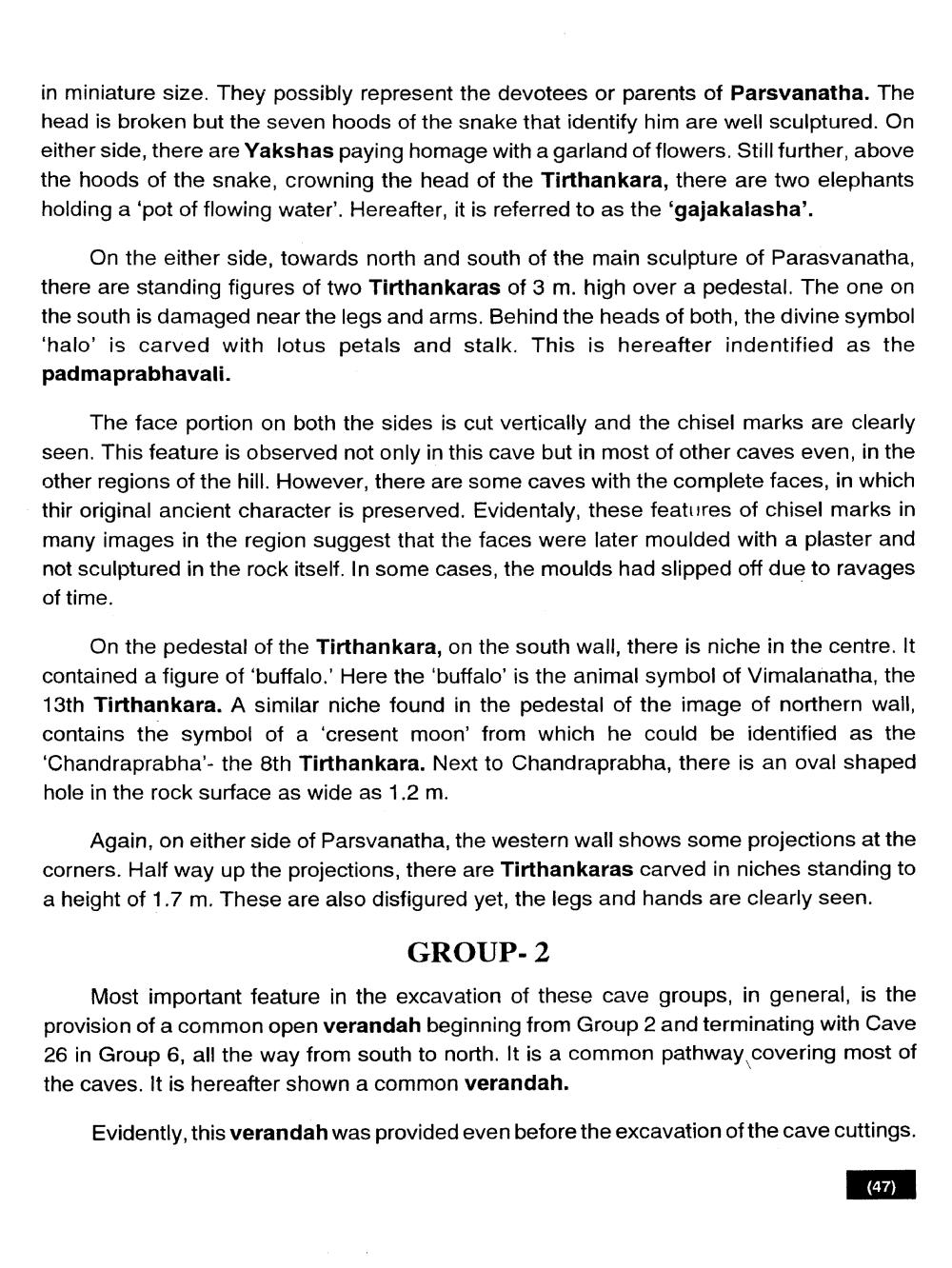________________
in miniature size. They possibly represent the devotees or parents of Parsvanatha. The head is broken but the seven hoods of the snake that identify him are well sculptured. On either side, there are Yakshas paying homage with a garland of flowers. Still further, above the hoods of the snake, crowning the head of the Tirthankara, there are two elephants holding a 'pot of flowing water'. Hereafter, it is referred to as the 'gajakalasha'.
On the either side, towards north and south of the main sculpture of Parasvanatha, there are standing figures of two Tirthankaras of 3 m. high over a pedestal. The one on the south is damaged near the legs and arms. Behind the heads of both, the divine symbol 'halo' is carved with lotus petals and stalk. This is hereafter indentified as the padmaprabhavali.
The face portion on both the sides is cut vertically and the chisel marks are clearly seen. This feature is observed not only in this cave but in most of other caves even, in the other regions of the hill. However, there are some caves with the complete faces, in which thir original ancient character is preserved. Evidentaly, these features of chisel marks in many images in the region suggest that the faces were later moulded with a plaster and not sculptured in the rock itself. In some cases, the moulds had slipped off due to ravages of time.
On the pedestal of the Tirthankara, on the south wall, there is niche in the centre. It contained a figure of 'buffalo.' Here the 'buffalo' is the animal symbol of Vimalanatha, the 13th Tirthankara. A similar niche found in the pedestal of the image of northern wall, contains the symbol of a 'cresent moon' from which he could be identified as the 'Chandraprabha'- the 8th Tirthankara. Next to Chandraprabha, there is an oval shaped hole in the rock surface as wide as 1.2 m.
Again, on either side of Parsvanatha, the western wall shows some projections at the corners. Half way up the projections, there are Tirthankaras carved in niches standing to a height of 1.7 m. These are also disfigured yet, the legs and hands are clearly seen.
GROUP-2
Most important feature in the excavation of these cave groups, in general, is the provision of a common open verandah beginning from Group 2 and terminating with Cave 26 in Group 6, all the way from south to north. It is a common pathway covering most of the caves. It is hereafter shown a common verandah.
Evidently, this verandah was provided even before the excavation of the cave cuttings.
(47)




